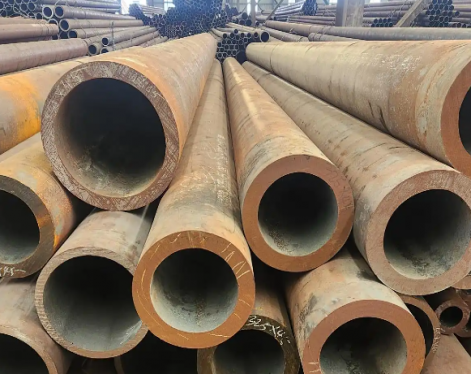The high-frequency welding of steel pipes uses the skin effect and proximity effect of alternating current. After the steel (strip) is rolled and formed, a circular tube blank with a broken section is formed, which rotates in the tube near the center of the induction coil. Or a set of resistors (magnetic rods), which form an electromagnetic induction loop with the opening of the tube blank. Under the action of the skin effect and the proximity effect, the edge of the opening of the tube blank generates a strong and concentrated heat effect, which makes the weld edge After being quickly heated to the temperature required for welding and squeezed by the pressure roller, the molten metal realizes intergranular bonding, and after cooling, a firm butt weld is formed.
The strip steel is sent to the welded pipe unit and rolled by multiple rollers, the strip steel is gradually rolled up to form a round tube blank with an open gap, and the reduction of the squeeze roller is adjusted to control the weld gap between 1 and 3 mm. And make the weld ends flush. If the gap is too large, the proximity effect will be reduced, the eddy current heat will be insufficient, and the weld will have poor intercrystalline joints, resulting in unfusion or cracking. If the gap is too small, the proximity effect will increase, and the welding heat will be too large, causing the weld to burn; or the weld will form a deep pit after extrusion and rolling, which will affect the surface quality of the weld.
The strip steel is sent to the welded pipe unit and rolled by multiple rollers, the strip steel is gradually rolled up to form a round tube blank with an open gap, and the reduction of the squeeze roller is adjusted to control the weld gap between 1 and 3 mm. And make the weld ends flush. If the gap is too large, the proximity effect will be reduced, the eddy current heat will be insufficient, and the weld will have poor intercrystalline joints, resulting in unfusion or cracking. If the gap is too small, the proximity effect will increase, and the welding heat will be too large, causing the weld to burn; or the weld will form a deep pit after extrusion and rolling, which will affect the surface quality of the weld.









